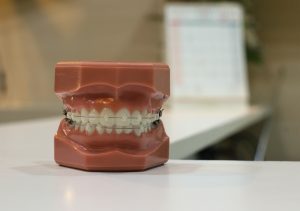Periodontal disease, commonly referred to as gum disease, is a prevalent dental concern impacting around 47% of individuals aged 30 and above. This condition can range from mild gingivitis, causing bad breath and bleeding gums, to severe periodontitis, which can lead to tooth loss and even have systemic health implications. With such a significant impact on oral and overall health, treating gum disease quickly and effectively is paramount. Fortunately, modern dentistry offers a range of treatments, and one that has gained attention in recent years is laser treatment. But is laser treatment for gum disease effective? In this article, we will explore the world of laser gum treatment, its effectiveness, its applications, and the pros and cons associated with it.
What is Laser Gum Treatment?
Laser gum treatment, also known as dental laser treatment for gums or laser surgery for gums, is a cutting-edge dental procedure that employs lasers to address various gum-related issues. These specialized lasers are engineered to release potent, precise beams of thermal energy, capable of executing various functions during gum surgery. These tasks include cutting and removing diseased tissue, coagulating blood vessels to form solid clots, killing germs and bacteria, and sterilizing the treatment area. This innovative approach to treating gum diseases harnesses the power of laser technology to improve patient comfort and accelerate the healing process.
Is It Effective in Treating Gum Disease?
One of the critical questions surrounding laser gum treatment is its effectiveness in combating gum disease. Gum disease is a complex condition characterized by inflammation and infection of the gums, and its severity can vary widely among individuals. Fortunately, laser therapy has displayed potential in addressing gum disease.
Although the American Dental Association (ADA) has not provided full endorsement for laser application in treating gum disease, an increasing body of evidence suggests that laser gum surgery is both secure and efficient for managing various dental issues, including gum disease. The American Academy of Periodontology, after examining the existing evidence, has proposed that suitable laser therapy could provide a slight additional advantage compared to conventional treatments.
What Type of Gum Disease can Laser Treat?

Laser gum treatment is versatile and can be employed to treat various forms of gum disease. Whether you are dealing with gingivitis, the milder form of gum disease characterized by inflamed gums and bad breath, or more severe periodontitis, laser therapy can be a viable option. Laser technology has the unique ability to distinguish between healthy and diseased tissue based on color, primarily targeting darker pigmentation present in infected gums. This precision enables the laser to remove unhealthy gum tissue while preserving healthy tissue, promoting gum stability, and reducing the risk of tooth loss.
What are the Pros and Cons?
Like any medical or dental procedure, laser gum treatment comes with its own set of pros and cons. Understanding these can help patients make informed decisions about their treatment options.
Pros
- Effectiveness – Laser gum treatment has shown effectiveness in treating gum disease, with the potential for better outcomes in some cases compared to traditional treatments.
- Less Pain – One of the significant advantages of laser therapy is its reduced invasiveness, resulting in significantly less pain during and after the procedure. Local anesthesia may be administered to manage any minor discomfort.
- Shorter Recovery – Unlike traditional gum flap surgery, which can lead to a recovery period of two to four weeks, laser treatment typically allows patients to return to normal within a few days. This shorter recovery time also reduces the risk of post-surgery infection.
- Preservation of Bite and Smile – Laser gum treatment involves no incisions, sutures, or bleeding, ensuring minimal impact on a patient’s bite or smile. Patients can quickly return to their normal appearance.
Cons
- Severity Limitation – In highly severe cases of gum disease, laser treatment may not be the most suitable form of treatment. In these situations, a surgical intervention or a blend of treatments might be advised.
- Availability – Not every periodontist provides laser gum treatment since it demands additional certifications and specialized training. Patients may need to search for a provider who offers this procedure.
- Cost – Laser periodontal treatment can be expensive when paying out of pocket. While many insurance policies cover some or all of the costs, patients without insurance coverage may need to explore payment options with their periodontists.
How Much Does Laser Treatment Cost?
The cost of laser gum treatment can vary widely based on several factors, including the extent of treatment needed and geographic location. Patients with dental insurance may find that their provider covers at least a portion of the cost, especially when laser therapy is used to treat gum disease. It’s important to note that costs can include consultation fees and additional procedures like scaling and root planing if performed before laser treatment.
The specific laser used in gum surgery, such as the Nd: YAG laser using the LANAP (laser-assisted new attachment procedure) protocol, can also affect costs. According to experts, the cost of this procedure varies, ranging from $1,000 to $2,650 per quadrant. Nonetheless, it is crucial to confer with a periodontist to obtain a precise estimate tailored to your specific requirements.
In cases where laser surgery is employed for cosmetic purposes, such as correcting a gummy smile, insurance is unlikely to cover the procedure, as it is considered cosmetic. The expenses associated with laser surgery for a gummy smile can fluctuate, typically falling between $675 and $875 for each tooth.
Laser Treatment is A Good Way to Treat Gum Disease
In conclusion, laser gum treatment offers a promising and effective way to combat gum disease, ranging from mild gingivitis to severe periodontitis. While it may not be suitable for the most severe cases and availability can vary, laser therapy provides several advantages over traditional surgical options. It reduces pain, shortens recovery time, preserves bite and smile, and can lead to positive outcomes for patients.
The cost of laser treatment may be covered by insurance, making it a viable option for many individuals seeking relief from gum disease. Ultimately, laser gum treatment represents a significant advancement in oral healthcare, offering patients a less invasive and more comfortable way to address gum issues and maintain their overall oral health.

